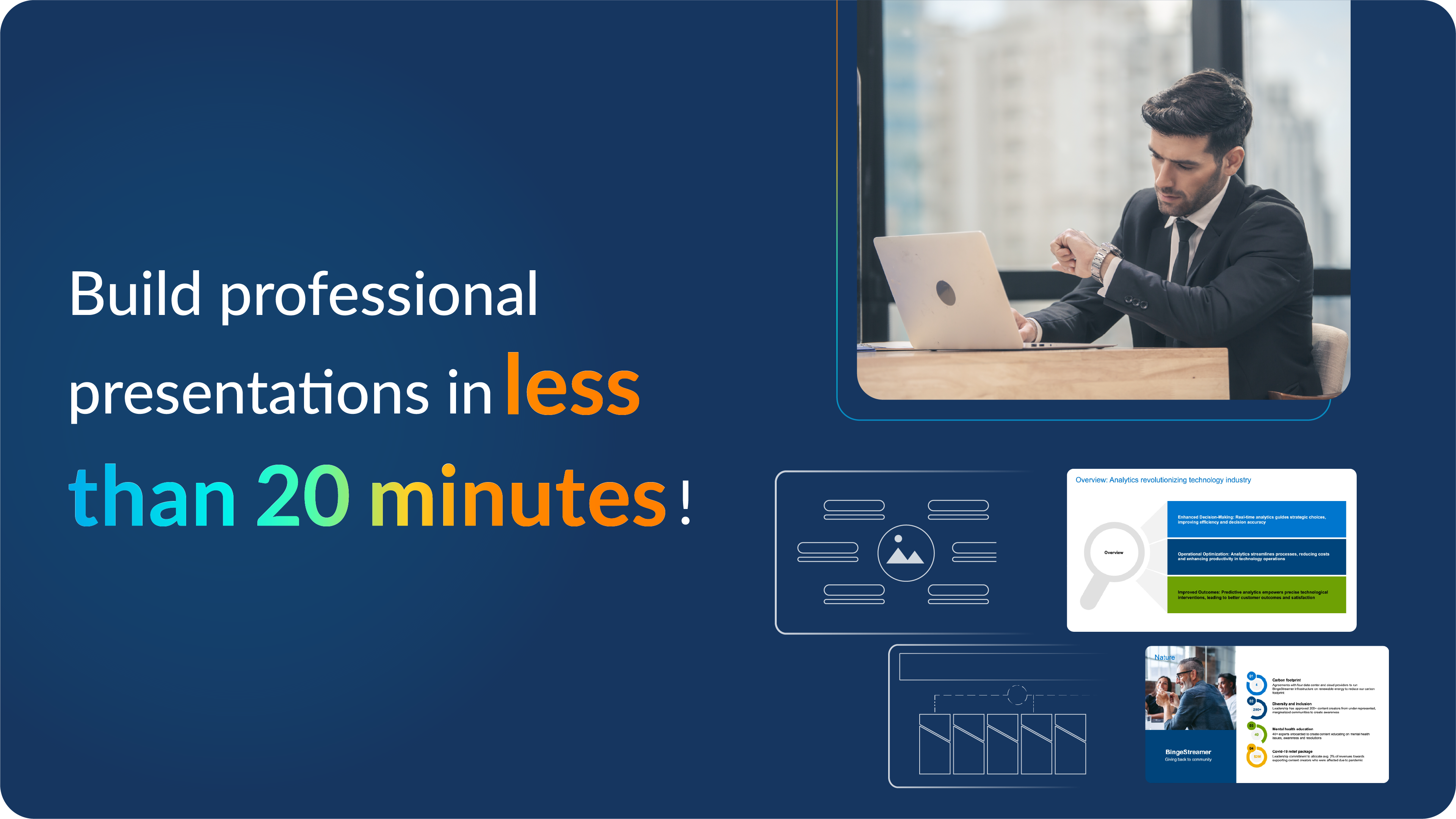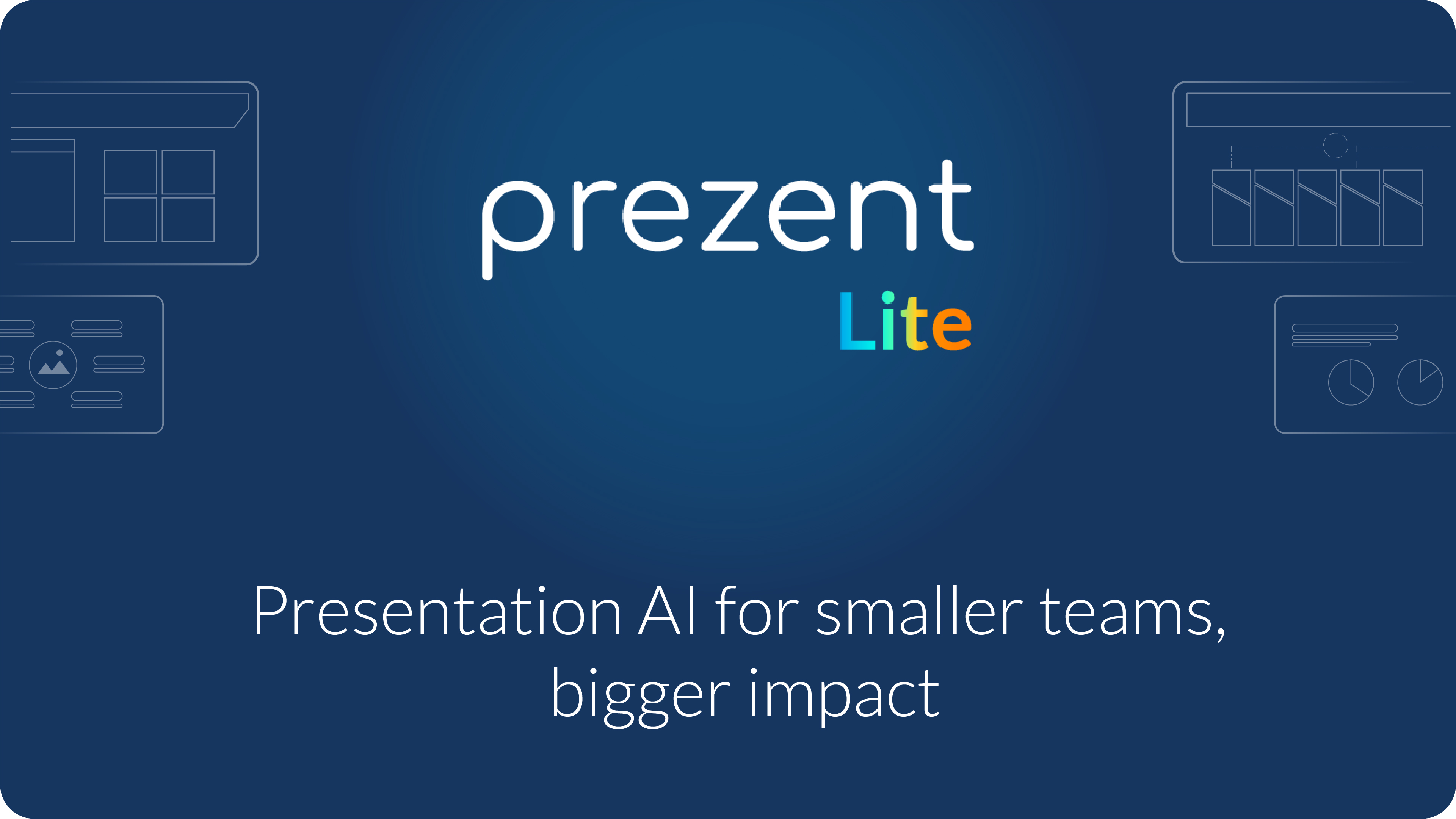Diversity and inclusion presentation: The all-in-one guide

Hey there, fellow presenters!
Today, we're diving deep into the world of diversity and inclusion presentations.
Whether you're an experienced presenter or just getting started, this all-in-one guide will equip you with the knowledge and tools to create compelling presentations that promote diversity and inclusion in your organization.
So, let's embark on this enlightening journey together!
What is diversity?
Diversity is more than just a buzzword; it's the beautiful tapestry of differences that make our world unique. In a workplace context, diversity encompasses a wide range of characteristics, including race, gender, ethnicity, background, and more. Embracing diversity means recognizing and valuing these differences, making space for everyone's unique perspectives.
What is inclusion?
Now, let's talk about inclusion. Inclusion goes hand in hand with diversity. It's about creating an environment where everyone feels welcome, respected, and valued. Inclusion means removing barriers and fostering a sense of belonging for all employees, regardless of their background or characteristics.
Benefits and challenges of diversity and inclusion
Now, let's delve deeper into the compelling world of diversity and inclusion, exploring the remarkable benefits they bring to the workplace, as well as the complex challenges that must be addressed. When done right, diversity and inclusion are not just buzzwords; they are powerful tools that can transform your organization in the following ways:
Benefits of diversity and inclusion
- Improved decision-making: Imagine a team where each member brings a unique perspective to the table. Diverse teams are more likely to consider a wider range of perspectives, leading to more creative and innovative solutions. When individuals from various backgrounds collaborate, they bring fresh ideas and approaches that can revolutionize decision-making.
- Increased creativity and productivity: Diversity of thought and experience can act as a catalyst for new and better ideas, products, and services. When individuals with different life experiences come together, they spark a synergy that drives creativity and boosts productivity.
- Stronger business results: Research has repeatedly demonstrated that companies with diverse and inclusive workforces perform better financially. Embracing diversity isn't just a moral imperative; it's also a smart business strategy.
- Improved employee engagement and satisfaction: Employees are more likely to be engaged and satisfied with their jobs when they feel valued and respected for their unique contributions. Inclusivity fosters an environment where every team member feels heard and appreciated.
- Reduced turnover: Employees are more likely to stay with a company that values diversity and inclusion. When individuals feel a sense of belonging and see their contributions recognized, they are less likely to seek opportunities elsewhere.
- Enhanced brand reputation: Companies that are seen as diverse and inclusive are not only attractive to customers but also to potential employees. A reputation for inclusivity can set your organization apart in a competitive job market.
Challenges of diversity and inclusion
However, it's crucial to acknowledge that the path to diversity and inclusion isn't without its obstacles. Some of the challenges include:
- Unconscious bias: We all have unconscious biases, which can lead to discrimination and exclusion. These biases are often deeply ingrained and require conscious effort to address.
- Communication barriers: Language and cultural differences can create communication challenges within diverse teams. Effective cross-cultural communication is key to breaking down these barriers.
- Power dynamics: People from different backgrounds may have varying levels of power and privilege. Navigating these dynamics can be complex and requires a commitment to creating an inclusive environment.
- Fear of change: Change can be intimidating, and some individuals may resist diversity and inclusion efforts out of fear or discomfort. It's essential to provide education and support to address these concerns.
Overcoming the challenges
To overcome these challenges, organizations can take proactive steps:
- Provide training and education on unconscious bias: Awareness is the first step towards change. Training programs can help individuals recognize their biases and take steps to mitigate them.
- Create opportunities for cross-cultural communication and collaboration: Encourage employees to learn from each other and build relationships across different backgrounds. This can foster mutual understanding and respect.
- Implement policies and procedures that promote equity and inclusion: Diversity recruiting, anti-discrimination policies, and unconscious bias training for managers are just a few examples of measures that can promote equity and inclusion.
- Create a culture of respect and inclusion: Valuing all employees for their unique contributions and creating a workplace where everyone feels safe and welcome is at the core of diversity and inclusion efforts.
By understanding both the remarkable benefits and complex challenges of diversity and inclusion, organizations can take concrete steps to create a workplace where everyone has the opportunity to thrive.
How to structure an effective diversity and inclusion presentation
Creating an impactful diversity and inclusion presentation is like sculpting a work of art – it requires careful planning, skill, and a deep understanding of your audience. A well-structured presentation can make all the difference in conveying your message effectively.

Here's a comprehensive breakdown of how to structure your diversity and inclusion presentation, inspired by best practices:
1. Start with a compelling introduction:
Begin with a captivating hook that grabs your audience's attention. Share a real-life story, a compelling statistic, or a thought-provoking quote related to diversity and inclusion. Make your audience curious and eager to learn more.
2. Define key terms:
Clear communication is essential. Start by defining essential terms like diversity, inclusion, equity, and belonging. Ensure that your audience comprehends these concepts from the get-go. Provide real-world examples to illustrate each term.
3. Discuss the benefits of diversity and inclusion:
Delve into the many advantages of embracing diversity and inclusion in the workplace. Explain how diverse teams lead to improved decision-making, increased creativity, heightened productivity, and enhanced financial performance. Use real-life case studies or success stories to underscore your points.
4. Identify the challenges of diversity and inclusion:
Honesty is key when addressing the challenges organizations may face in promoting diversity and inclusion. Acknowledge issues such as unconscious bias, communication barriers, power dynamics, and the fear of change. Relate these challenges to real-world scenarios to make them relatable to your audience.
5. Offer solutions to the challenges:
Transition smoothly from discussing challenges to presenting actionable solutions. Share strategies and best practices that organizations can implement to overcome these obstacles. Emphasize the importance of unconscious bias training, cross-cultural communication, diversity recruiting, and the creation of inclusive policies.
6. End with a compelling call to Action:
Leave a lasting impression by concluding your presentation with a strong call to action. Encourage your audience to take concrete steps towards promoting diversity and inclusion in their workplaces or communities. This could include further education, engagement in diversity initiatives, or supporting organizations dedicated to diversity and inclusion efforts.
When delivering your presentation, remember to incorporate visuals, stories, and real-world examples to engage your audience and make your message memorable. Be prepared to answer questions and be open to feedback. Maintain a respectful and positive tone throughout, avoiding stereotypes or generalizations.
Finally, remain optimistic about the future of diversity and inclusion, and convey that positivity to your audience. By following this structured approach, your diversity and inclusion presentation will undoubtedly make a lasting impact.
Do’s and don'ts on a diversity and inclusion presentation
Now, let's explore some do's and don'ts when creating diversity and inclusion presentations:
Do's:
- Embrace diversity in your organization.
- Celebrate differences and promote acceptance.
- Value the contribution of every team member.
- Promote a culture of equality and fairness.
- Use diverse templates and designs to emphasize your message.
Don't:
- Use discriminatory language or behavior.
- Rely on stereotypes.
- Exclude anyone from the conversation.
- Neglect to emphasize the value of diversity.
- Use slang or phrases that may be offensive or exclusionary.
Summarizing key takeaways
- Diversity includes differences like race and gender.
- Inclusion fosters a respectful environment.
- Better decision-making, creativity, and satisfaction.
- Stronger results and reduced turnover.
- Unconscious bias and communication barriers.
- Bias training and inclusive policies.
- Respect and a culture of inclusion.
- Start strong, define key terms, discuss benefits and challenges, and end with a call to action.
Inclusivity is not just a checkbox; it's a principle that should be ingrained in every aspect of your organization. When you emphasize diversity and inclusion, you empower your employees to speak clearly and slowly, fostering an environment where everyone can thrive.
FAQ's
1. What should I consider to ensure accessibility for audience members with disabilities?
To ensure your presentation is accessible to all, consider using sufficient contrast in your slides, and you can even use a blindness simulator tool to check. Additionally, avoid flash animations, as they can be problematic for individuals with epilepsy or migraine.
2. How can I eliminate discriminatory behavior in my corporate presentations?
Inclusive leadership plays a vital role in eliminating discriminatory behavior in corporate settings. Leaders should aim for ongoing integration of diversity and inclusion principles into the workplace culture to make a difference.
3. How can I make sure my slides represent a variety of backgrounds and ethnicities?
When crafting your presentation, aim to include images, icons, and charts that are representative of diverse backgrounds and ethnicities. This promotes a more inclusive visual experience.
4. What is the outcome of using inclusive leadership principles in corporate presentations?
The outcome of implementing inclusive leadership in corporate presentations is improved retention and recruitment. Inclusive leaders create an environment where individuals from all backgrounds feel valued and motivated to stay, and this attracts new talent.
Here is a guide on recruitment presentation.
5. Why is it essential to aim for ongoing integration of diversity and inclusion principles in presentations?
Ongoing integration ensures that diversity and inclusion become ingrained in the culture of your organization. This commitment helps to eliminate discriminatory behavior and fosters an environment where everyone can thrive.
Create your diversity and inclusion presentation with Prezent
Now that you're equipped with knowledge and best practices, it's time to take action. Crafting a powerful diversity and inclusion presentation has never been easier with Prezent. In today's world, embracing inclusion isn't just a choice; it's a necessity for organizations to thrive.
By using Prezent to create effective diversity and inclusion presentations, you're not just delivering information; you're promoting a culture of acceptance and innovation. Remember, diversity is our strength, and inclusion is our path to excellence.
So, take the lead, empower your team, and make a meaningful difference!

Signup our Free Trial or book a Demo today with Prezent!













